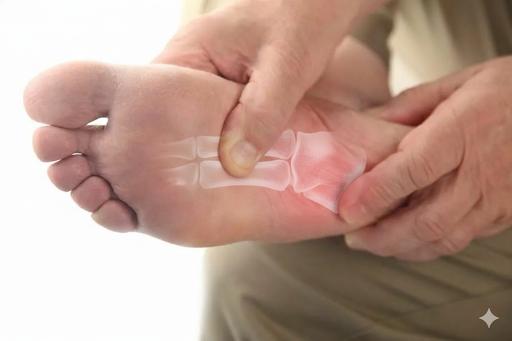Keep Feet Safe at the Gym
The American College of Foot and Ankle Surgeons offers tips for foot safety while at the gym.
Start new workouts gradually– Increase your stamina and the length of your workouts gradually to avoid overuse injuries such as stress fractures or tendon strains and sprains. Stretching your muscles before and after workouts also helps prevent these types of injuries. “If you do feel you’ve sprained your ankle, be sure to seek treatment right away,” Florida foot and ankle surgeon, Brandi M. Johnson, DPM, FACFAS, explains. “Untreated or repeated ankle sprains may lead to chronic ankle instability, a condition that causes persistent pain and a ‘giving way’ of the ankle.”
Wear the right shoe and sock-Wear well-fitting athletic shoes designed for the exercise or sport. According to Dr. Johnson, shoes that don’t support the arch of the foot and provide cushion for the heel can cause heel pain (plantar fasciitis). Shoes that are too small can also cause a neuroma, or a thickening of the nerve tissue, in the foot and may require injections, medication or physical therapy. Wearing cotton or non-slip socks are also key to help avoid painful blisters, which can become infected and cause more serious issues.
Use good technique– Improper exercise techniques can result in injury to the tendons or ligaments in your feet and ankles. “Incorrect posture or misuse of exercise equipment can cause decreased stabilization in the foot and ankle, leading to joint sprains and muscle strains,” Dr. Johnson says.
Protect yourself from bacteria-Sweaty shoes, public showers, exercise equipment and the pool deck at the gym are breeding grounds for fungus, viruses and bacteria, including drug-resistant strains like MRSA (methicillin-resistant Staphylococcus aureus) which has become increasingly more common. Never go barefoot while in public areas; water shoes can provide a great barrier between your feet and the wet surfaces. “It’s also best to cover cuts and cracks in the skin or ingrown toenails since these minor tears in the skin’s surface can act as entry points for bacteria. If you have a cut or scrape that becomes red or swollen and is not healing in a timely manner, don’t hesitate to see a foot and ankle surgeon for an examination,” Dr. Johnson says.
Listen to your Body– Above all, it’s important to listen to your body. If you experience an injury or pain, call your foot and ankle surgeon.
- http://www.foothealthfacts.org/Content.aspx?id=2334




